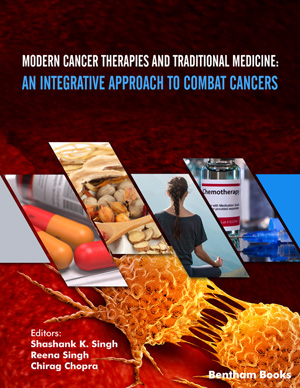
Abstract
Hepatocellular carcinoma (HCC) is the fifth most common form of cancer worldwide and the third most common cause of cancer-related death. In the beginning period, healing medicines, for example, careful resection, liver transplant and neighborhood removal, can improve the patient’s endurance. Be that as it may, the infection is identified in the cutting-edge stage; also, some accessible treatments are confined to palliative consideration and nearby treatment. Assessed the dietary benefit of some normal cell reinforcement specialists that help the capacity of the body coming about an improvement of the well-being and insurance from various ailments; our audit will give an updated status of the various parts of HCC the board through covering the viability and the advantageous impacts of various regular operators and their system of activity against HCC for the future treatment modalities. In this review, we talk about the ongoing advances identified with the reason (featuring the principle hazard factors), treatment, and result in hepatocellular carcinoma.
Graphical Abstract
[http://dx.doi.org/10.1016/j.jhep.2011.05.039] [PMID: 21801699]
[http://dx.doi.org/10.1186/1479-5876-9-171] [PMID: 21985599]
[http://dx.doi.org/10.1016/B978-0-12-821712-2.00013-X]
[http://dx.doi.org/10.1201/9781003140108-14]
[http://dx.doi.org/10.1016/B978-0-12-821712-2.00018-9]
[http://dx.doi.org/10.1016/B978-0-12-821712-2.00016-5]
[http://dx.doi.org/10.1002/cncr.32802] [PMID: 32162336]
[PMID: 28545181]
[http://dx.doi.org/10.1016/j.ramb.2013.03.005] [PMID: 24041910]
[http://dx.doi.org/10.1002/hep.22580] [PMID: 19003900]
[http://dx.doi.org/10.1158/0008-5472.CAN-05-4608] [PMID: 16651430]
[http://dx.doi.org/10.1186/1476-511X-5-4] [PMID: 16515689]
[http://dx.doi.org/10.1002/hep.21196] [PMID: 16628664]
[http://dx.doi.org/10.1016/S1089-3261(02)00006-5] [PMID: 12122867]
[http://dx.doi.org/10.1016/j.jacme.2013.05.001]
[http://dx.doi.org/10.1093/annonc/mdt355]
[http://dx.doi.org/10.20517/2394-5079.2016.12]
[http://dx.doi.org/10.20517/2394-5079.2018.23]
[http://dx.doi.org/10.1038/nrm2308] [PMID: 18097445]
[http://dx.doi.org/10.1152/ajpregu.00247.2017] [PMID: 28835450]
[http://dx.doi.org/10.1111/j.1749-6632.1970.tb49786.x] [PMID: 4332407]
[http://dx.doi.org/10.3389/fbioe.2020.00200] [PMID: 32258013]
[http://dx.doi.org/10.1042/BJ20151227] [PMID: 27026395]
[http://dx.doi.org/10.1042/BJ20061131] [PMID: 17150040]
[http://dx.doi.org/10.1080/01926230290166724] [PMID: 12512863]
[http://dx.doi.org/10.7150/thno.38834] [PMID: 31938064]
[PMID: 22753724]
[http://dx.doi.org/10.1038/nrn1434] [PMID: 15298006]
[http://dx.doi.org/10.1038/nrd2761] [PMID: 19165233]
[http://dx.doi.org/10.1101/cshperspect.a008763] [PMID: 22952396]
[http://dx.doi.org/10.1016/S0891-5849(02)00905-X] [PMID: 12126755]
[http://dx.doi.org/10.18097/PBMC20196503165] [PMID: 31258141]
[http://dx.doi.org/10.1016/j.biopha.2018.04.126] [PMID: 29710659]
[http://dx.doi.org/10.1002/hep.1840040402] [PMID: 6745847]
[PMID: 2572174]
[http://dx.doi.org/10.1055/s-0042-110178] [PMID: 27399851]
[http://dx.doi.org/10.1007/s12272-016-0766-0] [PMID: 27271269]
[http://dx.doi.org/10.2174/1871520617666170327155930] [PMID: 28356024]
[http://dx.doi.org/10.1016/S0092-8674(01)00623-7] [PMID: 11779459]
[http://dx.doi.org/10.1038/sj.onc.1206557] [PMID: 12910247]
[http://dx.doi.org/10.1038/35041687] [PMID: 11089981]
[http://dx.doi.org/10.5772/64787]
[http://dx.doi.org/10.1186/1477-3163-5-14] [PMID: 16689993]
[http://dx.doi.org/10.1007/s00204-020-02688-4] [PMID: 32107588]
[http://dx.doi.org/10.1021/acs.chemrestox.0c00071] [PMID: 32945164]
[http://dx.doi.org/10.1038/s12276-020-0384-2] [PMID: 32060354]
[http://dx.doi.org/10.1016/S0300-483X(02)00448-1] [PMID: 12505314]
[http://dx.doi.org/10.3889/oamjms.2017.101] [PMID: 28932315]
[http://dx.doi.org/10.1096/fj.02-0752rev] [PMID: 12832285]
[http://dx.doi.org/10.1016/B978-0-12-801663-3.00001-7]
[http://dx.doi.org/10.1111/j.1440-1746.2008.05502.x] [PMID: 18854000]
[http://dx.doi.org/10.1016/j.apsb.2014.04.002] [PMID: 26579381]
[http://dx.doi.org/10.3390/md13063877] [PMID: 26096275]
[http://dx.doi.org/10.1093/ajcn/79.5.727] [PMID: 15113710]
[http://dx.doi.org/10.2174/138955711794519546] [PMID: 21222576]
[http://dx.doi.org/10.1016/j.cbi.2014.07.001] [PMID: 25016076]
[http://dx.doi.org/10.22037/ghfbb.v13i2.1882] [PMID: 32308939]
[http://dx.doi.org/10.1002/ptr.2362] [PMID: 18446848]
[http://dx.doi.org/10.5142/jgr.2011.35.1.069]
[http://dx.doi.org/10.3892/ijo.23.4.1087] [PMID: 12963989]
[http://dx.doi.org/10.3390/ijms11010067] [PMID: 20162002]
[http://dx.doi.org/10.1080/10590501.2017.1391516] [PMID: 29115913]
[http://dx.doi.org/10.2217/nnm.13.133] [PMID: 23987111]
[http://dx.doi.org/10.3390/antiox5020015] [PMID: 27196936]
[http://dx.doi.org/10.1002/anie.201707137]
[http://dx.doi.org/10.1002/advs.201800017] [PMID: 29938184]
[http://dx.doi.org/10.1038/s41563-019-0462-9] [PMID: 31427744]
[http://dx.doi.org/10.1016/j.biomaterials.2017.04.011] [PMID: 28414974]
[http://dx.doi.org/10.1016/j.biomaterials.2014.01.048] [PMID: 24508370]
[http://dx.doi.org/10.1016/j.biomaterials.2016.01.070] [PMID: 26874282]
[http://dx.doi.org/10.1016/B978-0-12-821163-2.00007-8]
[http://dx.doi.org/10.1016/j.bcab.2020.101810]
[http://dx.doi.org/10.2147/IJN.S131973] [PMID: 28435252]
[http://dx.doi.org/10.1002/ptr.5211] [PMID: 25091591]
[PMID: 27540518]
[http://dx.doi.org/10.1007/s13105-012-0215-6] [PMID: 23104078]
[http://dx.doi.org/10.1016/j.cbi.2015.03.003] [PMID: 25770930]
[http://dx.doi.org/10.1021/jacs.5b12070] [PMID: 26918394]
[http://dx.doi.org/10.1039/b311404j] [PMID: 15282635]























